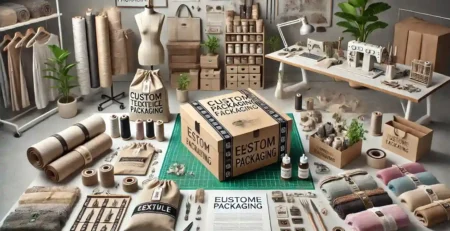
13
Mar
Understanding OEM vs ODM: Which Is Right for Your Brand?
When launching a clothing or textile brand, choosing between OEM (Original Equipment Manufacturer) and ODM (Original Design Manufacturer) is crucial. Both models offer unique advantages, but which one is right for your business?
For brands looking to enter the sustainable fashion industry, particularly in hemp fabric clothing, working with hemp textile OEM services in India can provide access to high-quality, eco-friendly materials while streamlining production.
What is OEM (Original Equipment Manufacturer)?
Definition of OEM
OEM manufacturing involves a brand outsourcing the production of its designs to a manufacturer. The brand provides technical specifications, patterns, and materials, while the OEM manufacturer handles production.
How OEM Works
- The brand creates a unique design and develops a tech pack with detailed instructions.
- An OEM manufacturer produces the product exactly as per the specifications.
- The brand markets and sells the product under its own label.
Advantages of OEM Manufacturing
✔ Full Control Over Design – Brands can create customized, unique products.
✔ Higher Brand Identity – Products are exclusive to the brand, offering differentiation.
✔ Scalability – Working with an OEM partner allows brands to scale production without owning a factory.
✔ Ideal for Hemp Fashion Brands – Many hemp fabric clothing OEM services produce sustainable, high-quality garments.
Challenges of OEM Manufacturing
⚠ Higher Production Costs – Custom manufacturing can be expensive.
⚠ Longer Lead Time – Designing and producing a unique product takes time.
⚠ Quality Control Responsibility – The brand must ensure manufacturing meets its standards.
Many eco-conscious brands work with hemp textile OEM services in India to create custom sustainable fashion lines, ensuring both ethical production and premium quality.
What is ODM (Original Design Manufacturer)?
Definition of ODM
ODM manufacturing allows brands to select from a manufacturer’s pre-designed products and customize them with branding, colors, and minor modifications.
How ODM Works
- The manufacturer develops product designs and produces ready-to-brand items.
- Brands choose an existing design and customize logos, colors, and packaging.
- The manufacturer produces and ships the final product.
Advantages of ODM Manufacturing
✔ Faster Time-to-Market – No need to design from scratch.
✔ Lower Costs – Production is more affordable than full custom development.
✔ Easier Entry for Startups – Brands can launch without heavy investments in R&D.
✔ Consistent Quality – Manufacturers use established production methods.
Challenges of ODM Manufacturing
⚠ Limited Customization – Brands have less control over product design.
⚠ Competitive Market – Since multiple brands may use the same base design, differentiation can be difficult.
⚠ Intellectual Property Risks – Designs may not be exclusive to one brand.
Brands looking to expand into sustainable textiles may find ODM manufacturing a quicker way to enter the market with hemp-based apparel.
Key Differences Between OEM and ODM Manufacturing
| Factor | OEM (Original Equipment Manufacturer) | ODM (Original Design Manufacturer) |
|---|---|---|
| Product Design | Fully customized | Pre-designed by manufacturer |
| Control | High – The brand owns the design | Limited – The brand customizes an existing design |
| Cost | Higher (R&D, prototypes, and production setup) | Lower (ready-made designs) |
| Time-to-Market | Longer – Requires design and production setup | Faster – Uses existing designs |
| Exclusivity | Exclusive to the brand | May be available to multiple brands |
| Risk Level | Higher – Requires strict quality control | Lower – Manufacturer ensures quality |
Which Manufacturing Model is Best for Your Brand?
Choose OEM If:
- You want to create a unique product that stands out.
- You have a strong brand identity and need custom designs.
- You are focused on sustainability and require hemp fabric clothing OEM services.
- You need intellectual property protection for your designs.
Choose ODM If:
- You need a faster and cost-effective way to launch your brand.
- You are testing the market before investing in unique designs.
- You prefer lower upfront investment and easier scalability.
For sustainable fashion brands, many hemp textile OEM services in India offer both OEM and ODM solutions, helping businesses customize eco-friendly clothing while reducing costs.
The Role of Hemp Textile OEM Services in Sustainable Fashion
Why Choose Hemp Fabric for Clothing?
Hemp is a highly sustainable material with benefits such as:
✔ Eco-Friendly Production – Requires less water and no pesticides.
✔ Durability – Stronger than cotton and long-lasting.
✔ Biodegradability – Fully decomposes, reducing waste.
✔ Breathability & Comfort – Naturally regulates temperature and absorbs moisture.
Hemp Fabric Clothing OEM Services: How They Work
- Custom Fabric Selection – Choose from hemp blends, organic dyes, and sustainable finishes.
- Exclusive Product Development – Develop eco-friendly garments tailored to brand needs.
- Private Label Manufacturing – Create branded hemp clothing with custom logos and labels.
- Scalable Production – Produce small-batch or bulk orders based on demand.
Hemp Textile OEM Services in India: Leading the Market
India is a global leader in hemp textile production, offering high-quality fabrics, ethical manufacturing, and innovative designs.
Benefits of working with Indian hemp OEM suppliers:
✔ Cost-Effective Production – Competitive pricing for custom sustainable apparel.
✔ Eco-Certifications – Many manufacturers are GOTS (Global Organic Textile Standard) certified.
✔ Skilled Craftsmanship – Blending traditional textile expertise with modern techniques.
Brands aiming to build a sustainable, ethical clothing line can benefit from hemp fabric clothing OEM services in India, ensuring premium-quality, eco-friendly fashion.
FAQs About OEM vs. ODM Manufacturing
1.What is the main difference between OEM and ODM?
OEM involves custom production based on a brand’s design, while ODM allows brands to choose from pre-made designs and customize branding.
2.Which model is more cost-effective for startups?
ODM is more affordable since it doesn’t require R&D, while OEM has higher initial costs but offers exclusivity.
3.How long does OEM production take?
It depends on design complexity, fabric sourcing, and production scale, but typically 3-6 months.
4.Why is hemp a good fabric choice for OEM clothing?
Hemp is sustainable, durable, breathable, and biodegradable, making it ideal for eco-friendly fashion.
5.Can I get private label hemp clothing through OEM services?
Yes! Many hemp fabric clothing OEM services offer custom branding, labeling, and packaging.
6.Is it possible to switch from ODM to OEM manufacturing?
Yes. Many brands start with ODM to test the market before investing in custom OEM designs.
7.What are the risks of working with an ODM manufacturer?
Limited design control, potential lack of exclusivity, and higher competition.
8.How do I find the best hemp textile OEM services in India?
Look for GOTS-certified manufacturers, check customer reviews, and request fabric samples.
9.What is the minimum order quantity (MOQ) for OEM hemp clothing?
MOQs vary but typically start from 100-500 pieces per style.
10.Can an OEM manufacturer help with eco-certifications?
Yes! Many hemp textile OEM services in India assist brands in getting organic and sustainability certifications.
Choosing between OEM and ODM manufacturing depends on your brand’s goals, budget, and timeline. While OEM offers customization and exclusivity, ODM provides speed and affordability.
For sustainable fashion brands, working with hemp fabric clothing OEM services or hemp textile OEM services in India ensures high-quality, eco-friendly apparel while supporting ethical production.


